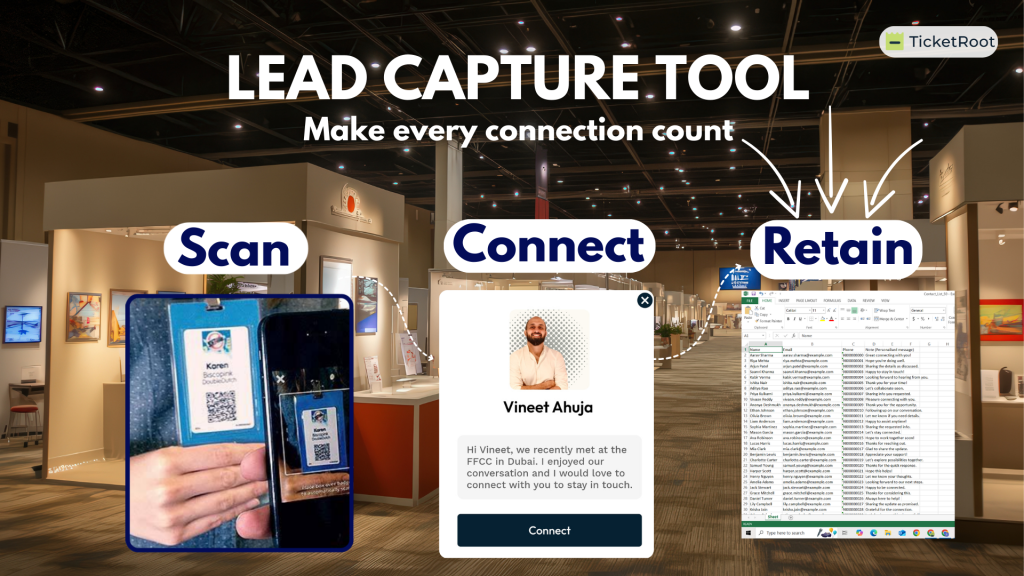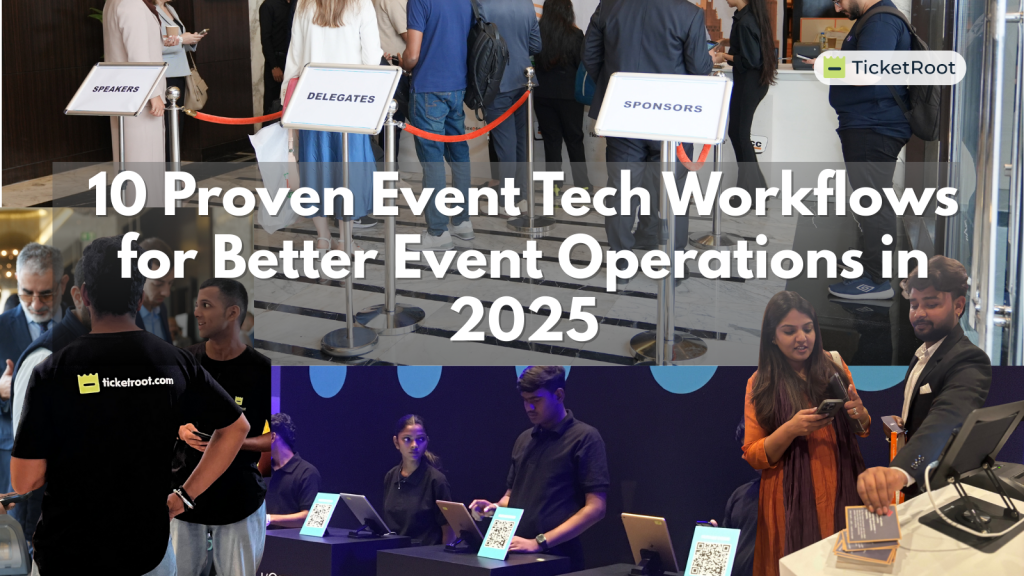What should I look for when choosing event tech in 2025?
That’s the question that most organizers are asking as expectations rise and resources tighten. Whether you’re planning a multi-city show or that large annual conference, the real challenge isn’t finding “shiny” new tech — it’s about benchmarking your current setup against what’s now possible in 2025. You want to know how it is possible to merge what you already have ( your expertise, the workflows you know) and amalgamate it with tech that works to truly minus or automate what can be automated to free up the operational stress on D day.
Here’s a mini-knowledge framework to guide you:
1. Ticketing & Access Control
Look for ticketing systems that support multiple ticket tiers with QR-based check-ins. In 2025, modular ticketing and zone-based access are the new baseline for festivals, summits, and exhibitions. Early identification and precise quantification help modularly take what you need and control the costs—they also help avoid last-minute chaos over fewer badges, wrong categories, etc.
🔗 How do I choose the best ticketing system for managing VIP and crew access?
2. Mobile Toolkit for Organizers
Mobile-based admin apps now let your team issue tickets, validate vouchers, and check in attendees from any phone. This is especially useful for multi-location events or day-long expos with smaller audiences. At Miss World 2024, Clockwork Events used mobile check-ins for over 2,000 VIP guests without a single queue.
🔗 How do mobile check-in apps compare to laptop setups at events?
3. Cashless Transactions with Trackable Data
Cashless isn’t about novelty anymore—it’s about control. Organizers can see what’s selling, when, and where. Sponsors can link campaigns to spend. And vendors get settled faster. This shift mirrors broader regional trends—for instance, Dubai is aiming to become almost entirely cashless by 2026, with more than 90% of transactions expected to go digital by then.
→ If you’re thinking about revenue visibility and reducing food court chaos, start with a cashless event model.
🔗 How do I set up cashless payments for vendors and attendees?
4. Branded Wearables & Custom Printables
Wristbands, badges, and cards aren’t just ID—they’re tools for zone access, payment, and sponsor branding. Make them functional, durable, and on-brand. At the Bharat Fintech Summit, QR bands were used to collect leads and power contactless networking.
🔗 How do badges and QR wearables improve event networking and security?
5. Automated Invites with Live RSVP Tracking
A good invite system does more than send emails. It tracks confirmations, links QR codes, and lets you update guests quickly—all without messy list management.
→ This is particularly valuable for invite-only or community-led events where RSVP control is critical.
🔗 How do I avoid RSVP mistakes in WhatsApp-based event invites?
6. Crew Accreditation & Real-Time Logs
Give your security and ops teams full clarity: who’s on ground, where they’re allowed, and what time they came in. Essential for compliance and operational control.
→ With platforms that offer crew logins and access mapping, zone breaches and missed shifts become easier to track.
🔗 How do I manage crew access and permissions at large events?
7. Live Dashboards for Admin Visibility
You shouldn’t have to ask someone to check the entry gate. Live dashboards offer a real-time view of ticket scans, sales, check-ins, and even queue length at booths. These insights are key to mid-event decisions—and often the reason teams catch issues early. At an event for the London Stock Exchange Group, organizers used live dashboards to monitor entry flow, vendor activity, and engagement in real time—all without back-and-forth on walkie-talkies.
🔗 How do I use live dashboards to monitor event performance in real time?
Final Thought: Pick Tech That Works for You
Tech shouldn’t overwhelm—it should quietly improve how you work. If a platform doesn’t help reduce manual tasks, track real revenue, or help your team move faster, it’s not worth it. As you build your stack this year, focus on tools that fit your team size, your event scale, and your local challenges.🔗 Set Up Your Event, Your way






